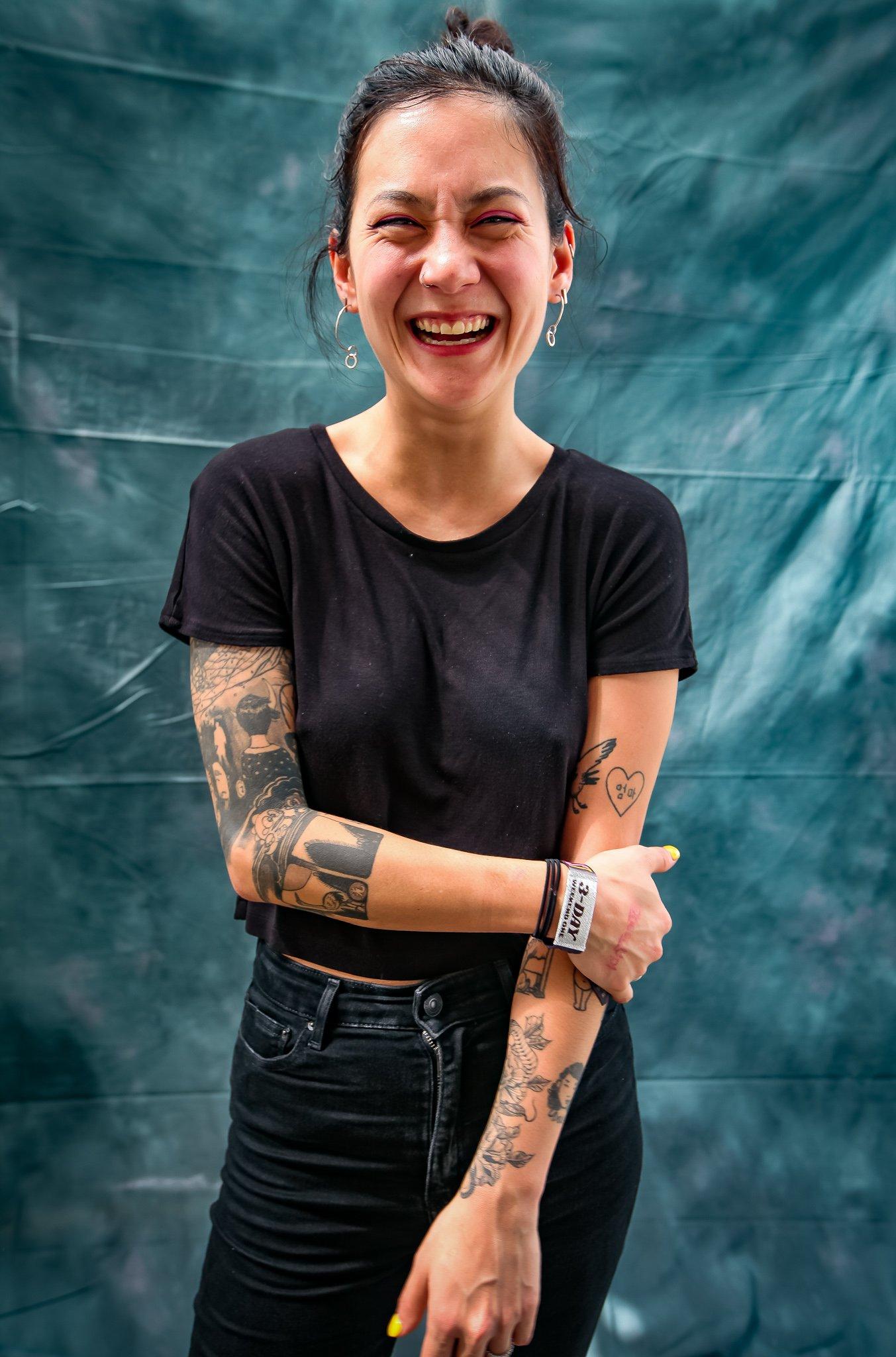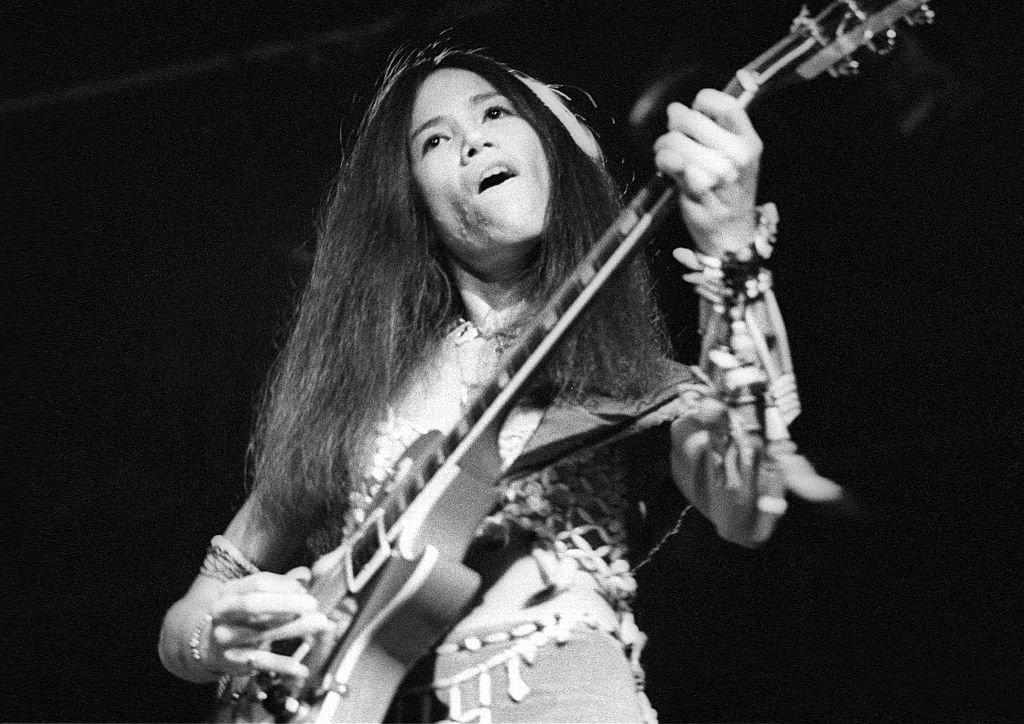Michelle Zauner is only beginning to reveal the breadth and depth of her talents. While she composes music for video games, directs music videos and is an accomplished writer, it's her work as Japanese Breakfast that has caught a buzz the past two years. Having released two albums under the moniker, her latest, Soft Sounds From Another Planet, expands the simple beauty and bite of her debut, Psychopomp, into new sonic – and personal – territory. As an emerging artist of many mediums, her work thus far is only the tip of a talent iceberg.
We caught up with Zauner recently to talk about her musical evolution, dissect her song "Boyish," hear what music and art is currently inspiring her, and much more.
How did you arrive musically in the direction of your second record?
Soft Sounds From Another Planet is a super different record from Psychopomp. I wrote my first record for Japanese Breakfast two months after my mom passed away. I didn't have a label, and I didn't have a deadline. I didn't have a band. It was just a therapeutic art project for me to process what I was going through, and kind of compartmentalize what I was feeling. It was just a really great way to focus my time after something really hard had happened. And then after I finished it, I sort of sent it around to labels and no one wanted it, and then it came out on Yellow K Records and people started really paying attention to the project.
Then I signed to Dead Oceans and all-of-a-sudden had a budget, and I had a deadline, and I had a fan base that we had made. And there was a lot more pressure, so I wanted to be really careful how I went about it. I didn't want to lose the kind of playfulness and the experimental quality of Psychopomp, I really wanted to go into the record and just play. And have a childlike, experimental time of making the record.
But I also wanted it to have a way more hi-fi sound. So I reached out to my friend, Craig Hendrix, who plays drums in the live band and he co-produced the album with me, and together we played all of the instruments, and had a very concentrated one month period of time in our studio in Philadelphia. We just wanted to make something that was really dynamic and I also felt for this project, I wanted to go into the studio with the live band being an afterthought. I just wanted to be able to put on whatever kind of instrumentation and build up the songs however I wanted to, without thinking how is it going to translate into a live setting. I feel like you're able to be more ambitious with a project if you approach it that way.
How have you approached translating these songs from the recordings, which are just so vast and nuanced, to a live stage show?
I don't know, I guess it just takes time. You figure out what's important. We use backing tracks on some of the songs, but we have four players. We switch off on guitar and keys a lot, and it's just about figuring out what is the most important part of the song and how to bring it out.
Can you tell us how "Boyish" was written and how it came together in the studio?
"Boyish" was written a long time ago, maybe three or four years ago, and it was originally, I wrote it for my old band, Little Big League, and it kind of turned into this terrible raucous pop punk song. And I just always hated the arrangement, and I always hated the production and I felt like it was a real, a real shame that that's how it happened.
<iframe width="620" height="349" src="https://www.youtube.com/embed/t3bjPGUDl1k" frameborder="0" allow="autoplay; encrypted-media" allowfullscreen></iframe>
And I feel like the lyrics are great and the chorus just lifts really naturally, And so I asked the band if I could revisit it on our next record and they said, "Go for it." So Craig and I really turned it into this Roy Orbison-esque, girl group, big Motown swelling chorus kind of song. It was really fun to put together. That was one of the most natural, quick to come together songs on the record, and I think the most beautiful collaboration between Craig and I.
And actually, the drum set we recorded were scratch drums, and the vocal that we recorded was a scratch vocal on a [Shure SM]57 with the speakers playing the track back. And when we tried to redo the vocal on a different microphone, a more expensive microphone, and comp it, and rerecord the drums… There was something so special about the one take scratch vocal. And so that sometimes, you need to add all the extra stuff in order to realize what is absolutely essential. And it was maybe one of the first songs on the record that I made where I understood how important the take can be.
I'm generally not a big analog buff and I like cheating. I like to comp stuff and do a million takes and multitrack, so for that, it was a really special moment where it's just like, "there is something really special about that take and no matter what, how many times we redo it, I can't recreate that." So it ended up just being the one vocal take. So that sound is really special to me, for sure.
Your recent article in The New Yorker is an incredible snapshot of how a place can trigger a feeling. How has Korean culture influenced your music.
I guess Korean culture – I don't know – I've always been Korean and written music so I don't really know what it's like to not be like that. I never really thought too much about it, it's just like writing anything else in my life. There are some things on my subconscious that filter their way into it. Like on Psychopomp, there's a voice recording of my mom who's talking to me on phone call, and she says a couple words in Korean, so that's on there. And on the first track of Soft Sounds From Another Planet, there is a song called "Diving Woman" which is written about these women on Jeju Island that are- it's kind of a matriarchal society where they do deep dives without equipment to collect abalone and shellfish, and they sell it at the market.
And I just thought that that occupation was really beautiful, to have that kind of regimen. Because when you're a musician, sometimes, it's really tainted by all this other stuff that you have to do. It's not this pure craft where you just make music and then that's all you do. You have to play a live show, you have to do interviews, you have to take photos, and all this stuff, and sometimes I just really romanticize this lifestyle where these women just dive. All day. And I think that I long for that in my life sometimes.
What inspires you and what are you listening to now? What in either music or other art are you into at the moment?
I am currently working on the soundtrack to an indie game called "Sable." So I've been listening, and also on tour, if I want to read or just have some solace, I really need to listen to ambient, instrumental music. So I've been listening to a lot of Japanese ambient music. Like Haruomi Hosono and Ryuichi Sakamoto. Just because it's the only music that puts me in my chill place. Brian Eno, Nils Frahm, those kinds of [artists].
What's next for you? Can you tease any projects for us?
I'll probably start working on a new record, and I'm working on the soundtrack to the game, I might write a book. I'm directing music videos for a couple of different artists, so just staying busy.
Hozier Opens Up About "Nina Cried Power," Reveals What's On His Playlist





